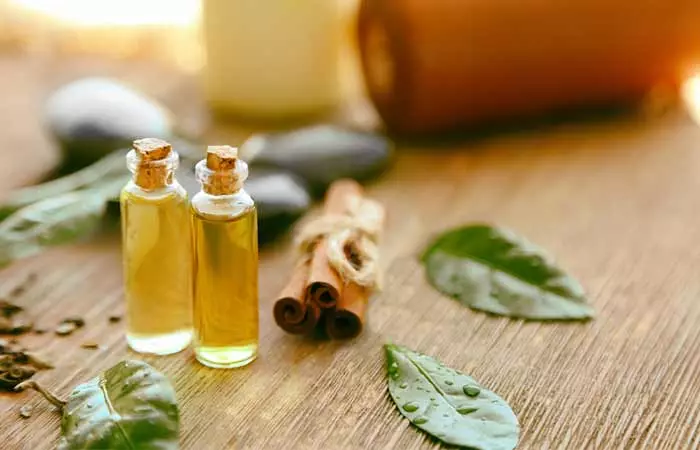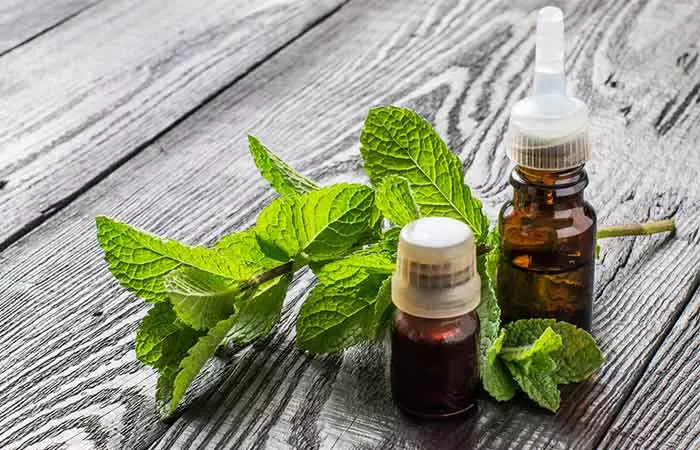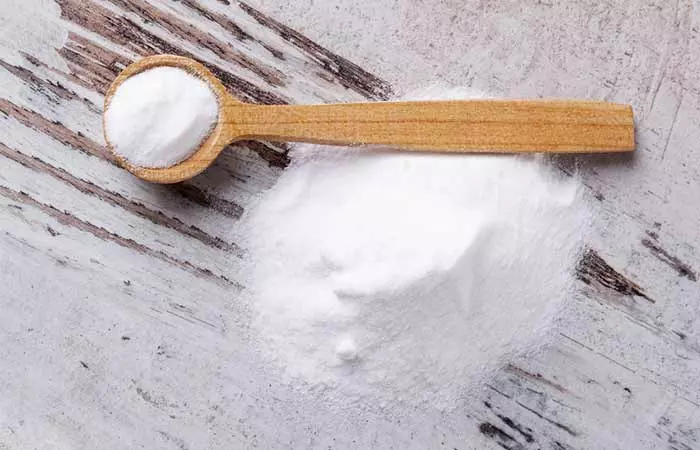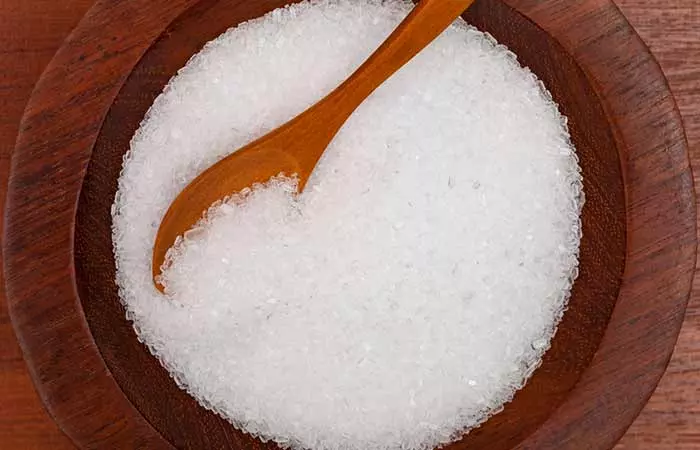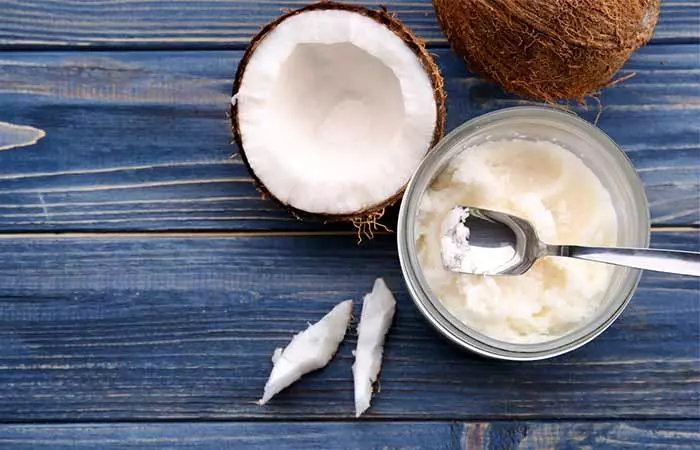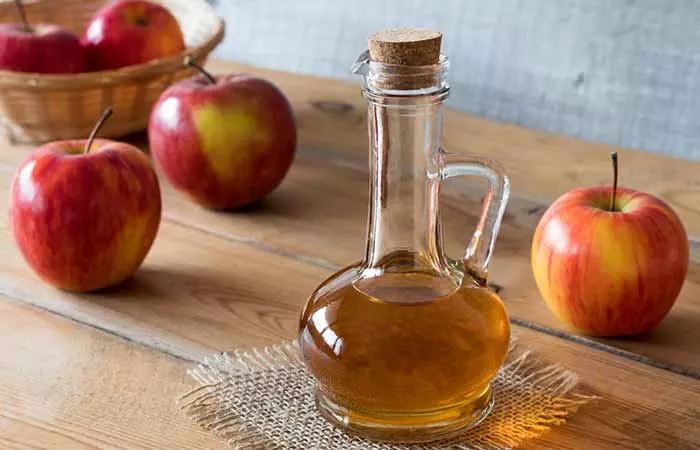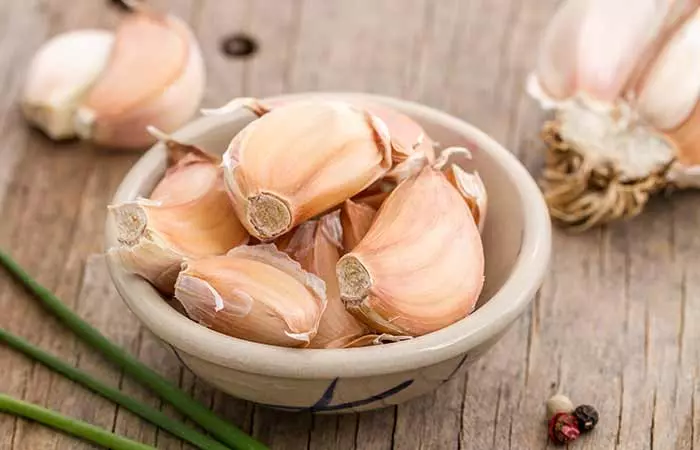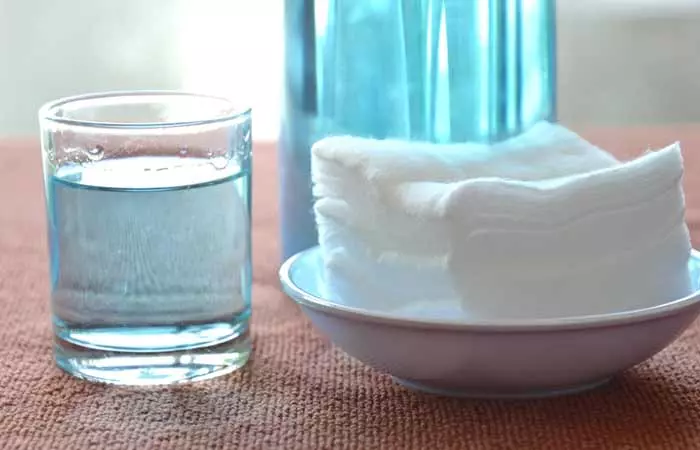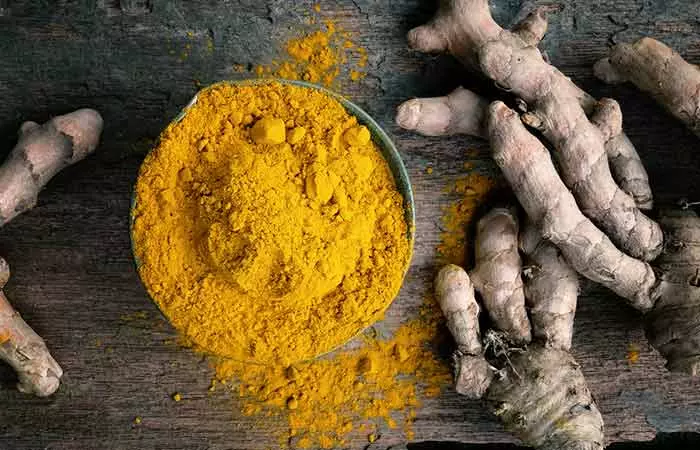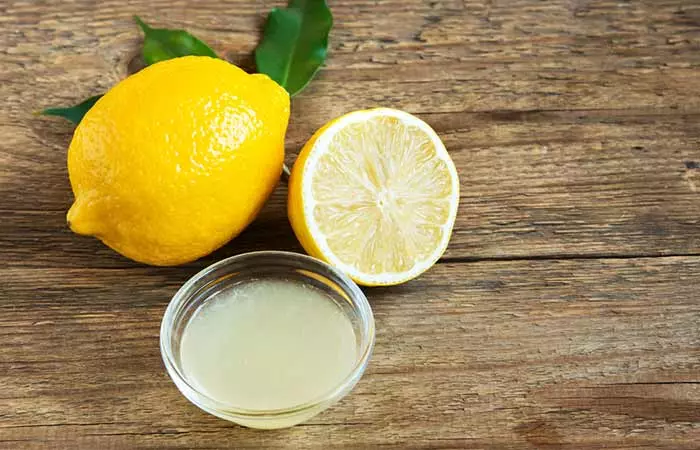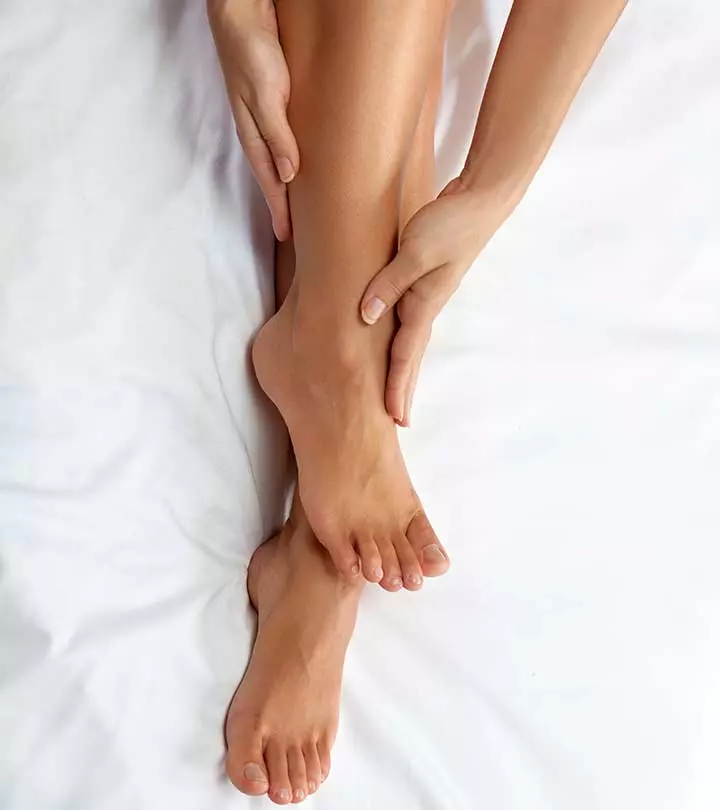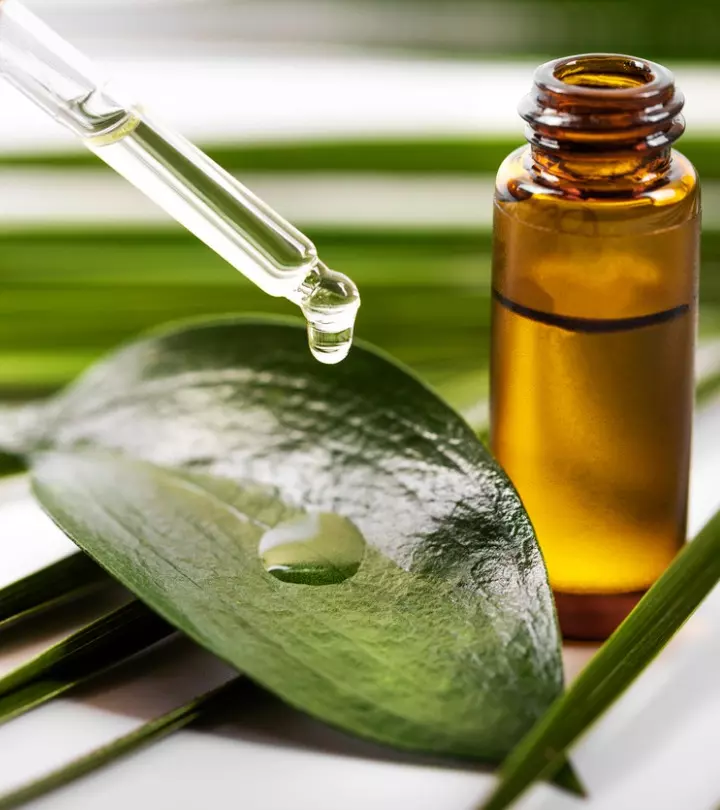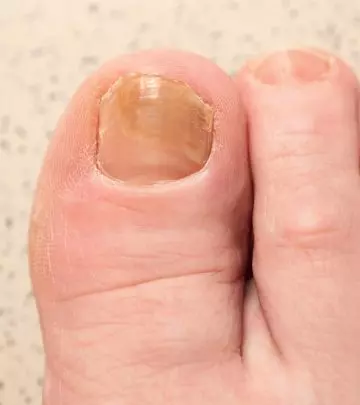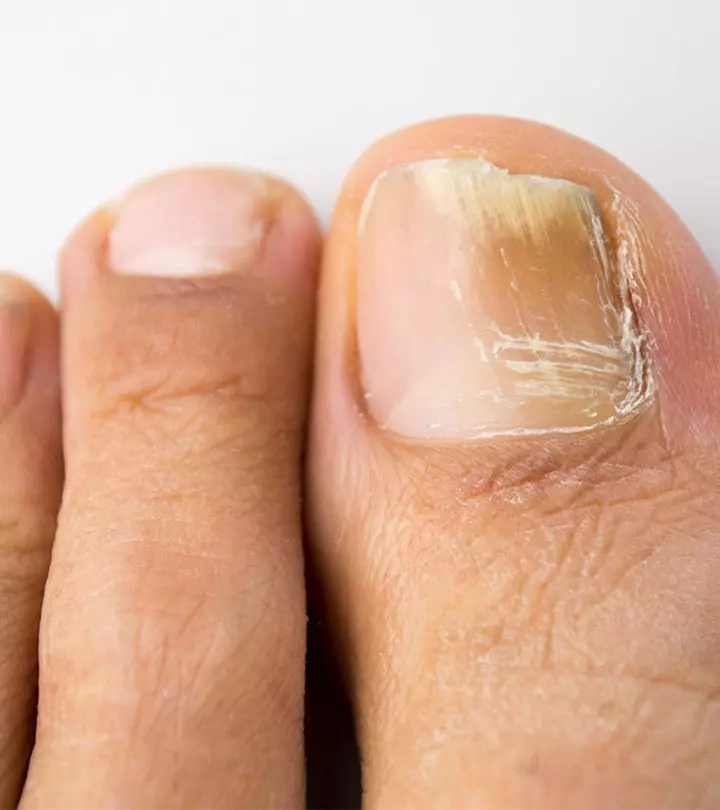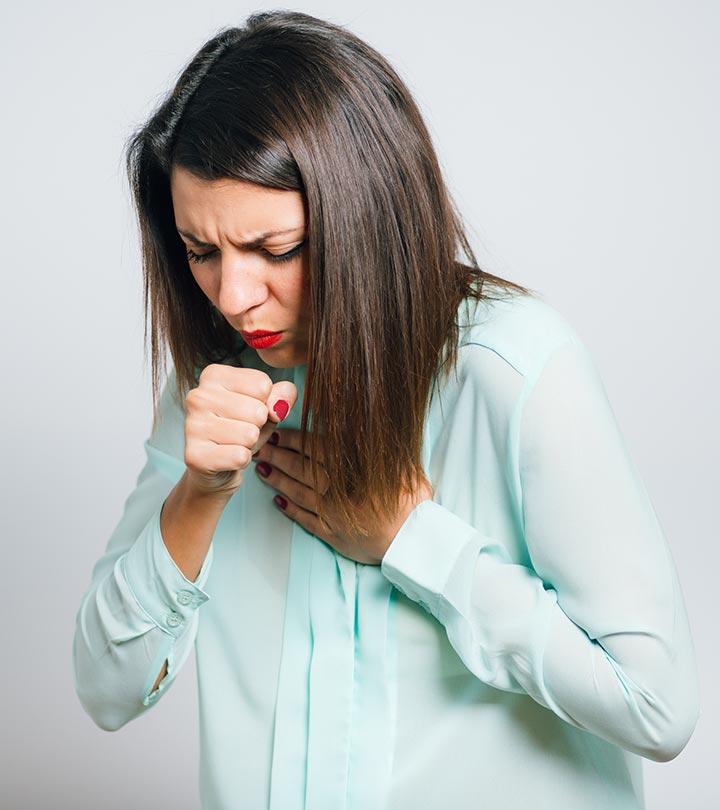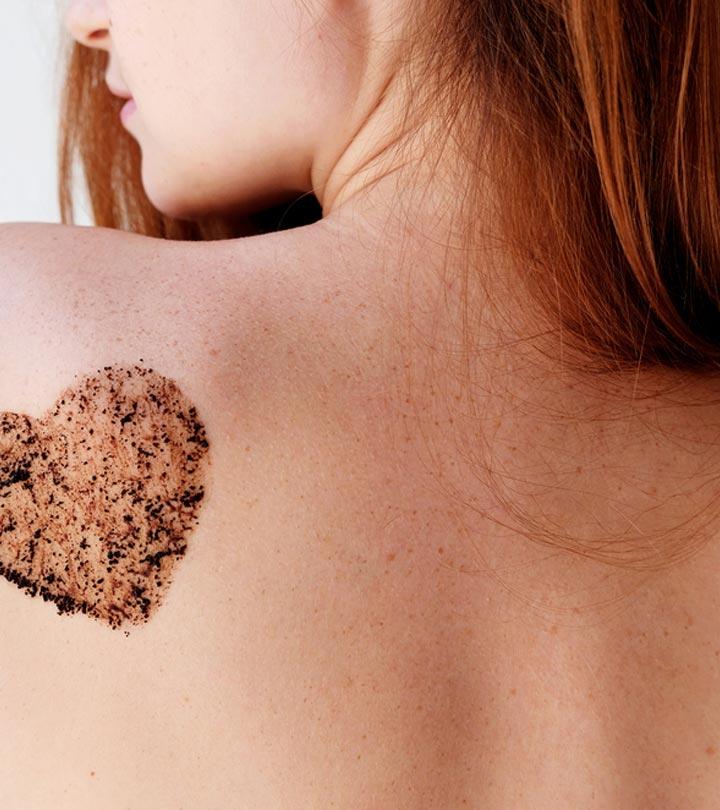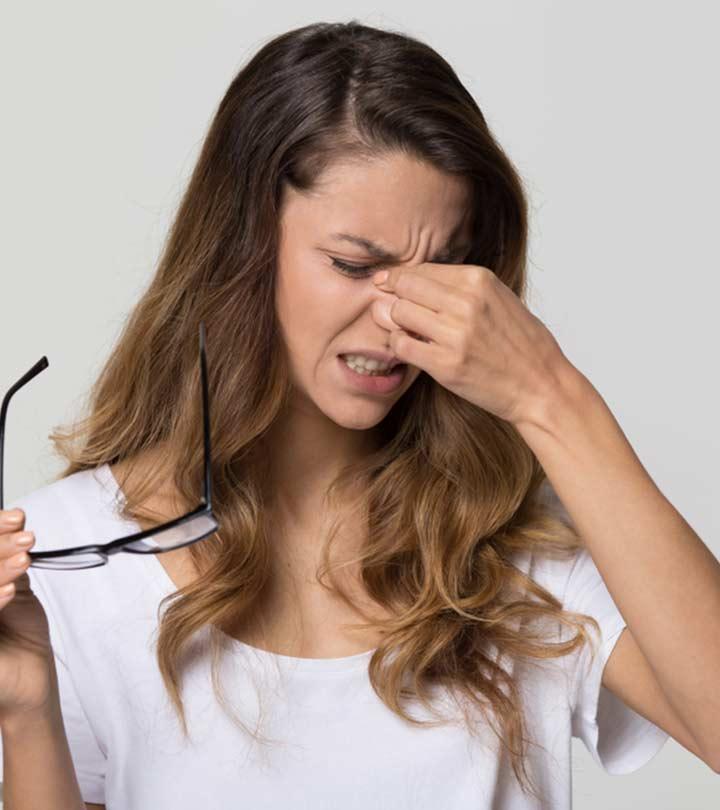10 Remedies To Get Rid Of Ingrown Toenail Pain Naturally
Keep your toes happy and healthy with these simple, natural pedicure tips.
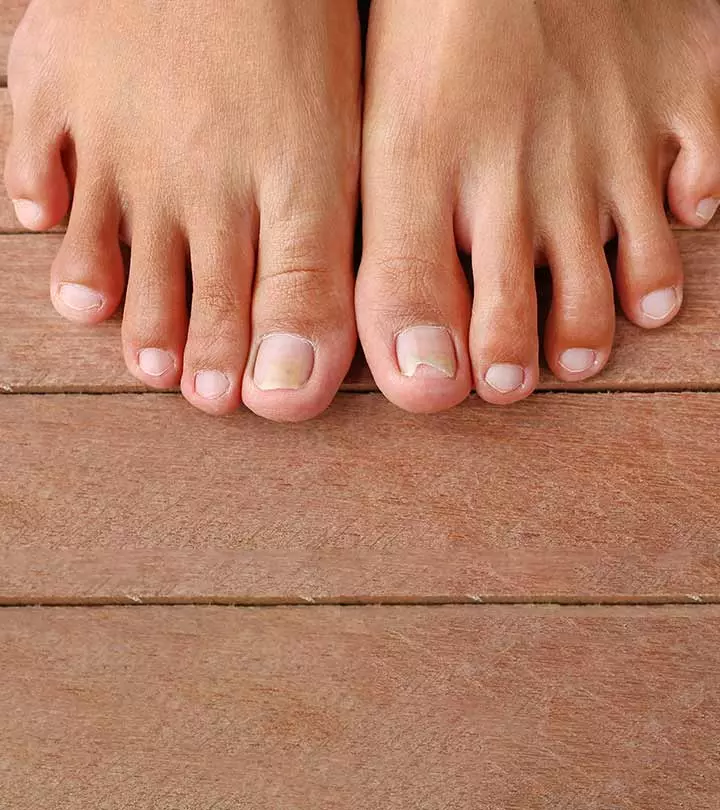
Image: Shutterstock
If you thought you were the only one suffering from ingrown nails and the pain that comes with it, you’re not alone. Sadly, you can’t just get rid of ingrown toenail pain just like that. In some cases, ingrown nails may require surgical intervention. The key to getting rid of the pain is to treat the ingrown nail without delay. In this article, we explore some of the causes of ingrown nail pain and a few home remedies you can try to alleviate the pain.
In This Article
What Is An Ingrown Toenail?
When the corners of your toenail grow into the skin right next to it, it results in an ingrown toenail.
 Quick Tip
Quick TipIngrown toenails can worsen with time and hence need to be treated soon. If you are looking for home remedies for ingrown toenail pain, we’ve got you covered. Given below is a list of solutions that can help relieve the pain.
What Causes Ingrown Toenails?
- Incorrect cutting of toenails
- Irregular nails
- Wearing footwear that places too much pressure on your toenails
- Toenail injuries
- Poor foot hygiene
- Genetic factors
Let us now look at the symptoms associated with ingrown toenails.
Symptoms Of Ingrown toenails
The symptoms of ingrown toenails vary and can be mild to severe, depending on their stage.
The early symptoms include:
- Skin turns tender around the ingrown nail
- Pain upon pressing the nail
- Build-up of fluid around the nail
Your ingrown toenails may also become infected and exhibit the following symptoms:
- Bleeding
- Pus oozing out from the skin surrounding the ingrown nail
- Skin overgrowth around your toe
Ingrown toenails can worsen with time and hence need to be treated soon. If you are looking for home remedies for ingrown toenail pain, we’ve got you covered. Given below is a list of solutions that can help relieve the pain.
Home Remedies To Relieve Ingrown Toenail Pain
- Essential Oils
- Baking Soda
- Epsom Salt
- Coconut Oil
- Apple Cider Vinegar
- Garlic
- Hydrogen Peroxide
- Turmeric
- Lemon Juice
- Onions
How To Get Rid Of Ingrown Toenail Pain Naturally
Note: Make sure you clean the affected toe with an antiseptic, antimicrobial, antibacterial, or antifungal cleanser before using any of the home remedies mentioned below. To sterilize and soothe the pain, you can apply warm water to the toenail.
1. Essential Oils
a. Tea Tree Essential Oil
You Will Need
- 2-3 drops of tea tree oil
- Coconut or olive oil (optional)
What You Have To Do
- Take a few drops of tea tree oil on your fingertips and apply it directly to the ingrown nail.
- You can also mix a few drops of tea tree oil with carrier oil if you have sensitive skin.
How Often You Should Do This
Do this twice daily.
Why This Works
Tea tree oil is a powerful antiseptic and can help in preventing further infection of the ingrown toenail. It also has antibacterial and antifungal properties that can inhibit bacterial and fungal growth on the infected toenail (1), (2).
According to a survey, in 2018, 666,235 patients in US hospitals were diagnosed with fungal infections. The most common fungal infections were Aspergillus, Pneumocystis, and Candida, which accounted for over 73.6% of diagnosed cases. Apart from this,an additional 6.6 million fungal infections were diagnosed during outpatient visits. Fungal infections can be a big problem in healthcare because they lead to high costs and can make people sicker or even cause death.
b. Peppermint Oil
You Will Need
2-3 drops of peppermint oil
What You Have To Do
- Clean the skin around the affected area or soak your feet in water for some time.
- Pat dry and apply a few drops of peppermint oil to the ingrown toenail and the skin around it.
How Often You Should Do This
You can do this twice daily.
Why This Works
The menthol in peppermint oil helps in soothing the pain, and its strong antimicrobial properties protect the toenail from further infection (3).
 Did You Know?
Did You Know?2. Baking Soda
You Will Need
- 1/2 teaspoon of baking soda
- A few drops of water
- Bandage or sanitary gauze
What You Have To Do
- Mix baking soda with water to make a thick paste.
- Apply this paste to the cleansed toenail and the skin around it.
- Cover it with a sanitary gauze or bandage.
How Often You Should Do This
You can do this 1 to 2 times daily.
Why This Works
Baking soda has natural antiseptic and sanitizing properties that keep your toenail infection-free. It also has antibacterial and antifungal properties that can inhibit the growth of bacteria and fungi on the infected toenail (4), (5).
3. Epsom Salt
You Will Need
- 1-2 tablespoons of Epsom salt
- Warm water
What You Have To Do
- Add one or two tablespoons of Epsom salt to a wide bucket filled with water.
- Soak your legs in it for 15 to 20 minutes.
How Often You Should Do This
You must do this 2 to 3 times daily.
Why This Works
Epsom salt has high magnesium content that helps fight inflammation and provides relief from the pain and swelling in the affected area (6).
4. Coconut Oil
You Will Need
Virgin coconut oil
What You Have To Do
Take a generous amount of virgin coconut oil and apply it to the ingrown toenail and the skin surrounding it.
How Often You Should Do This
Apply coconut oil twice daily.
Why This Works
Coconut oil has a wide range of medicinal benefits due to the presence of certain medium-chain fatty acids like lauric and caprylic acid. These fatty acids impart antifungal, analgesic, and anti-inflammatory properties to coconut oil, which can help in getting rid of the ingrown toenail and the pain (7), (8).
5. Apple Cider Vinegar
You Will Need
- Apple cider vinegar
- Cotton balls
What You Have To Do
- Take a cotton ball and dip it in some apple cider vinegar.
- Apply the soaked cotton ball directly to your infected toenail.
How Often You Should Do This
You must follow this procedure twice daily.
Why This Works
Apple cider vinegar can be your best bet to get rid of ingrown toenails. Its powerful anti-inflammatory properties can help reduce the pain and inflammation, and its antimicrobial properties can protect the ingrown toenail from bacterial or fungal infections (9).
6. Garlic
You Will Need
- 2-3 cloves of crushed garlic
- Bandage or sanitary gauze
What You Have To Do
- Crush the garlic cloves and apply it on and around the infected toenail.
- Cover it with a bandage or sanitary gauze and leave it on overnight.
How Often You Should Do This
You must do this once daily before going to bed.
Why This Works
Garlic contains a component called allicin that exhibits antimicrobial properties, which can protect the ingrown toenail from further infection and damage. Garlic also has anti-inflammatory properties that can help in speeding up the recovery (10), (11).
7. Hydrogen Peroxide
You Will Need
- 1/2 cup of 3% hydrogen peroxide
- Warm water
What You Have To Do
- Pour half a cup of 3% hydrogen peroxide in a wide bucket filled with warm water.
- Soak your feet in this for 15 to 20 minutes.
How Often You Should Do This
Do this 2 to 3 times daily.
Why This Works
Hydrogen peroxide is a natural disinfectant that is commonly used to clean wounds to prevent infection. This is because it is antibacterial and antifungal in nature. Given these activities, hydrogen peroxide may be a great option for the treatment of ingrown nails (12), (13).
Nancy, a blogger, shared her experience of using hydrogen peroxide to manage an ingrown toenail. She said, “Dabbing my toenail with the peroxide helped some. The skin was rough for about a week, but no actual damage (i).”
8. Turmeric
You Will Need
- 1 teaspoon of turmeric
- Water
What You Have To Do
- Take a teaspoon of turmeric powder and add enough water to it to make a fine paste.
- Apply this paste to the affected toenail.
How Often You Should Do This
You can do this 2 to 3 times a day.
Why This Works
Turmeric contains curcumin that exhibits anti-inflammatory and antimicrobial properties. These healing and soothing properties can be helpful in getting rid of an ingrown toenail and the pain (14), (15).
9. Lemon Juice
You Will Need
- 1 teaspoon of freshly squeezed lemon juice
- A bandage or sanitary gauze
What You Have To Do
- Apply freshly squeezed lemon juice to the toenail.
- Cover it using a sanitary gauze or bandage and leave it on overnight
How Often You Should Do This
You must do this once daily, preferably before going to bed.
Why This Works
The acidic nature of lemons can be quite effective in combating the growth of bacteria on an ingrown toenail (16). Lemons also possess mild antifungal properties that can provide protection from fungal infections as well (17).
10. Onion
You Will Need
- Sliced onions
- A sanitary gauze or bandage
What You Have To Do
- Take a piece of sliced onion and apply it directly to the ingrown toenail.
- Cover it with a bandage or sanitary gauze and leave it on overnight.
How Often You Should Do This
You must do this once daily before going to bed.
Why This Works
Onions are one of the best remedies to get rid of ingrown toenails. They contain compounds like allicepin, which possesses antifungal activities, and can thus be used in the removal of the fungus on the infected toenail (18). Onions also exhibit strong antibacterial and anti-inflammatory activities that can be used to prevent further infection in the area and provide instant relief from the pain and inflammation(19).
In addition to trying out the above-mentioned remedies, you can also follow these tips to avoid ingrown toenails.
Preventive Tips
- Always cut your nails straight, without curving the edges.
- Avoid cutting your nails too short.
- Wear comfortable shoes that fit you properly.
- Use a toe protector when required.
- In case of abnormally curved or thick toenails, you can opt for surgery to prevent them from becoming ingrown.
Despite these measures, if you are unable to fix your toenails, you need to visit your doctor immediately.
When To See A Doctor
You might have to see your doctor or podiatrist if:
- You experience discomfort in your toe or pus oozes out around the skin of your ingrown toenail.
- You have diabetes or any other medical condition that results in poor blood flow to your feet.
Your healthcare provider may provide you with certain medications to treat ingrown toenails. Learn more about them below.
Antibiotics For Ingrown Toenail
Doctors may prescribe antibiotics to patients, especially those with diabetes or weakened immune systems, to treat nail infections caused by certain bacteria (20). Oral antibiotics may help reduce the pain and inflammation.
You can also use antibiotic ointments to add to your foot soak. This may make it easier to remove the ingrown toenail. Soak the affected toe’s foot in warm, soapy water for 10 to 20 minutes. After soaking, apply a topical antibiotic ointment like Neosporin or a strong steroid cream to the affected area multiple times a day until the issue is resolved.
Infographic: How To Cut Toenails To Prevent Ingrown Toenails
Ingrown toenails can be extremely painful and sometimes require surgical or medical intervention. One way to ensure that toenails do not pierce into the surrounding skin is to follow a proper technique for trimming the toenails. Check out the infographic below to learn how to cut toenails to prevent in-growth. Illustration: StyleCraze Design Team
Ingrown toenails are a result of toenails that grow right into the skin next to it and can be an extremely painful condition. Common causes of this condition can include improper cutting of nails, nail irregularities, toenail injuries, and poor foot hygiene. You may experience tender skin, oozing pus, fluid build-up, pain, and skin overgrowth if you have ingrown toenails, and the longer it is left untreated, the more severe the symptoms may get. Essential oils, baking soda, onions, garlic, and coconut oil are some of the home remedies for ingrown toenail pain. However, seek medical treatment if you suspect that the toenail has become infected or the pain is too severe.
Frequently Asked Questions
What is the recovery period for an ingrown toenail surgery?
The recovery period can last anywhere from 6 to 8 weeks.
What kinds of salt can cure an ingrown toenail?
Salts such as Epsom salt, table salt, and baking soda can be quite effective in curing an ingrown toenail as they have antimicrobial and anti-inflammatory properties.
What is the best cream for an ingrown toenail?
Your doctor may prescribe ointments like Bacitracin or Neosporin. However, if you are looking for natural substitutes to solve your problem, you can use any of the remedies mentioned in this article like tea tree oil, lemon juice, or coconut oil.
Can an ingrown toenail heal on its own?
Minor ingrown toenails can recover naturally as the nail grows. But painful and infected ingrown nails need to be treated by a doctor.
How long does ingrown toenail pain last?
Post-treatment, you may see improvement within 2-3 days, and the pain should subside by a week. However, visit a doctor if healing takes longer than 2 weeks.
How do you cut out a deep ingrown toenail?
Never cut out a deep ingrown nail at home. Instead, let the doctor carry out this procedure. This will reduce the risk of infection and ensure proper healing.
Key Takeaways
- Ingrown toenails are painful and can be caused by improper nail trimming, tight shoes, fungal infections, or trauma.
- To treat an ingrown toenail, simply soak it in warm water with Epsom salt.
- Other remedies include treating the infected nail with turmeric, lemon, apple cider vinegar, and garlic.
- To prevent the condition from recurring, wear comfortable shoes, cut your nails straight and use a toe protector.
Learn how to get rid of an ingrown toenail naturally with 10 simple home remedies. Click on the video below and get rid of the pain and discomfort without surgery!
Personal Experience: Source
StyleCraze's articles are interwoven with authentic personal narratives that provide depth and resonance to our content. Below are the sources of the personal accounts referenced in this article.
i. Hydrogen peroxide for an ingrown toenailhttps://nancylebov.livejournal.com/613905.html
References
Articles on StyleCraze are backed by verified information from peer-reviewed and academic research papers, reputed organizations, research institutions, and medical associations to ensure accuracy and relevance. Read our editorial policy to learn more.
- Melaleuca alternifolia (Tea Tree) oil: a review of antimicrobial and other medicinal properties
https://pubmed.ncbi.nlm.nih.gov/16418522/ - Antifungal activity of the components of Melaleuca alternifolia (tea tree) oil
https://pubmed.ncbi.nlm.nih.gov/12969301/ - Antibacterial and antifungal activity of ten essential oils in vitro
https://pubmed.ncbi.nlm.nih.gov/8893526/ - Antibacterial activity of baking soda
https://pubmed.ncbi.nlm.nih.gov/12017929/ - Antifungal activity of sodium bicarbonate against fungal agents causing superficial infections
https://pubmed.ncbi.nlm.nih.gov/22991095/ - Evaluation of the Anti-Inflammatory Effects of Peri-Operative Infusion of Magnesium Sulfate on the Microsurgical Procedures for Intracranial Tumors
https://www.ncbi.nlm.nih.gov/pmc/articles/PMC4358335/ - In vitro antimicrobial properties of coconut oil on Candida species in Ibadan Nigeria
https://pubmed.ncbi.nlm.nih.gov/17651080/ - Anti-inflammatory analgesic and antipyretic activities of virgin coconut oil
https://pubmed.ncbi.nlm.nih.gov/20645831/ - Antimicrobial activity of apple cider vinegar against Escherichia coli Staphylococcus aureus and Candida albicans; downregulating cytokine and microbial protein expression
https://pubmed.ncbi.nlm.nih.gov/29379012/ - Antimicrobial properties of allicin from garlic
https://pubmed.ncbi.nlm.nih.gov/10594976/ - Immunomodulation and Anti-Inflammatory Effects of Garlic Compounds
https://www.ncbi.nlm.nih.gov/pmc/articles/PMC4417560/ - Antifungal Effect of Hydrogen Peroxide on Catalase-Producing Strains of Candida spp.
https://www.ncbi.nlm.nih.gov/pmc/articles/PMC2364421/ - Antibacterial activity of hydrogen peroxide and the lactoperoxidase-hydrogen peroxide-thiocyanate system against oral streptococci.
https://www.ncbi.nlm.nih.gov/pmc/articles/PMC186138/ - Antioxidant and anti-inflammatory properties of curcumin
https://pubmed.ncbi.nlm.nih.gov/17569207/ - A Review on Antibacterial Antiviral and Antifungal Activity of Curcumin
https://www.ncbi.nlm.nih.gov/pmc/articles/PMC4022204/ - Bactericidal activity of lemon juice and lemon derivatives against Vibrio cholerae
https://pubmed.ncbi.nlm.nih.gov/11041258/ - Phytochemical antimicrobial and antioxidant activities of different citrus juice concentrates
https://www.ncbi.nlm.nih.gov/pmc/articles/PMC4708628/ - Isolation of allicepin a novel antifungal peptide from onion (Allium cepa) bulbs
https://pubmed.ncbi.nlm.nih.gov/15113089/ - Anti-inflammatory effects of onions: inhibition of chemotaxis of human polymorphonuclear leukocytes by thiosulfinates and cepaenes
https://pubmed.ncbi.nlm.nih.gov/2246074/ - Managing infected ingrown toenails
https://www.ncbi.nlm.nih.gov/pmc/articles/PMC1472971/
Read full bio of Caroline Duncan
Read full bio of Anjali Sayee
Read full bio of Monomita Chakraborty





